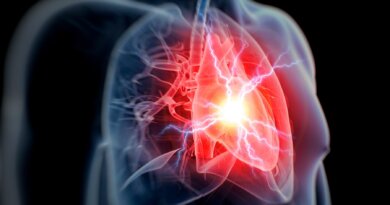The Guide for Pet Owners – Top Dog Tips
Addison’s disease was named after the physician Thomas Addison defining this dysfunction of the adrenal gland in the 19th century. This disease is well-known as adrenal insufficiency (hypoadrenocorticism). It can be fatal to dogs without adequate treatment since glands can’t produce its hormones, cortisol and aldosterone, in the required amount.
The history of this disease says that it was diagnosed in dogs in the 1950s. It is not rare but often under-diagnosed since it is not possible finding it without looking for specific symptoms. Some data show that Addison’s disease is 100 times more common in canines than in humans.

What Is Addison’s Disease?
The adrenal glands located next to the kidneys regulate a few bodily functions by producing two hormones.
Once these glands start with a lower production of hormones, the dog gets one of two types of Addison’s disease:
Primary Addison’s disease – It is the disease appearing in either typical or atypical form after the dog’s immune system destroys its own adrenal gland. The reason for this is still idiopathic (unknown). Approximately 90% of canines suffering Addison’s have this type of disease.
Secondary Addison’s disease – It occurs as a complication of tumor in the pituitary gland. Also, the cause can be the pituitary gland that doesn’t produce enough hormones necessary for stimulating the adrenal gland for some reason. In some cases, the dog can develop this disease after stopping steroid therapy abruptly.
Causes of Addison’s Disease in Dogs
In most cases, it is impossible determining the reason for the occurrence of Addison’s disease in canines. However, there are indications that it can occur as the result of an autoimmune process against the adrenal glands.
Possible causes also include:
- Damage of the adrenal gland
- Infarction
- Hemorrhage
- Antifungal drug ketoconazole
- Adrenolytic medications such as mitotane and trilostane
- A sudden interruption of prednisone treatment
- Granulomatous disease
- Metastatic tumor
Any dog breeds can develop Addison’s disease, but some of them are more predisposed, including:
- Standard Poodles
- Bearded Collies
- Springer Spaniels
- Basset Hound
- Great Danes
- Rottweilers
- Saint Bernards
- Labrador and Retrievers
- German Shepherds
- Wheaten Terriers, Airedale Terriers, and West Highland White Terriers
- Portuguese Water Dogs
Approximately 70% of dogs suffering from Addison’s are female. They are usually 4 to 6 years old.
Symptoms of Addison’s Disease in Dogs
It is quite complicated to diagnose progressive Addison’s disease since the range of symptoms is wide. Dog’s suffering this disease may experience the bullet points below, you can follow through each one to get more detailed information on each symptom:
Diagnosis of Addison’s Disease in Dogs
Addison’s disease is often quite challenging to diagnose since the first symptoms occur when 80 to 90% of the outer adrenal gland fails.
The reduction of aldosterone production will often cause changes in serum levels of calcium, sodium, potassium, and chloride. However, in many cases, these results are within physiological limits.
On the other hand, the reduction of cortisol production will affect the level of glucose in the blood, the formation of red blood cells, metabolism, blood pressure, and the breakdown of proteins and fat.
If the vet suspects Addison’s disease after a blood test and complete physical exam, the next step is to include the following tests:
Chemistry tests – They evaluate the function of kidneys, pancreas, and liver.
ECG – It helps the vet to check a heart rhythm indicating the possible existence of underlying heart disease.
Antibody tests – They will help the vet to define if the dog has been exposed to infections.
Electrolyte tests – They will confirm if the dog is dehydrated or suffers from an electrolyte imbalance.
Urine tests – They will show if there is an infection of the urinary tract and confirm if the kidneys concentrate urine appropriately.
Thyroid test – The result will show the level of hormones the thyroid gland produces.
ACTH-stimulation test – It is the test showing if adrenal glands respond to ACTH (adrenocorticotropic hormone). It is the way to monitor the adrenal glands’ function after adding the synthetic ACTH. The point of this test is measuring the concentration of cortisol before and after adding ACTH, which will show if the adrenal glands function ordinarily.
Treating Addison’s Disease in Dogs
The first thing the vet needs to do is to solve the crisis. Since it is an acute medical emergency, the dog needs to stay in the hospital to get intensive therapy.
Once the animal is out of the danger zone, the vet will prescribe replacement hormone medications, including steroid prednisone daily and injectable mineralocorticoid once a month.
The physiologic dose of prednisone is 0.05 to 0.2 mg per pound of body weight. It replaces the regular amount of cortisol the body produces during the day.
Plus, canines with typical Addison’s disease will need mineralocorticoid supplementation. There are two of them, Florinef (fludrocortisone acetate) and Percorten-V (DOCP or desoxycorticosterone pivalate).
Unfortunately, Addison’s disease is not curable, and the dog needs to take hormone therapy for the rest of its life. The problem is that finding the right dosage of the medications will take time and multiple measuring of the hormone level.
Preventing Addison’s Disease in Dogs
It is practically impossible to prevent Addison’s disease except in the case of an Addisonian crisis induced by medication.
Prognosis of Addison’s Disease in Dogs
Once the right diagnosis is made, the prognosis of the disease is excellent if the dog gets its medicaments regularly.
Addisonian Crisis
Addisonian crisis is the most dramatic symptom of this disease, which occurs once the dog goes into shock. It is a result of an entirely unbalanced level of hormones and the circulatory collapse. It can be dramatic since most owners are unaware that their dogs have a health problem to that point.
In fact, in 30 to 35% of dogs, the first diagnosis of Addison’s disease is after the crisis occurs. After giving the dog glucocorticoid steroids and intravenous saline solution, it will recover within roughly two hours.






